This three-storey, grade B listed property was built in 1801 as part of the transformation of Saltoun Square (previously named Kirk Green) into a ‘classical town centre’. Originally called the Saltoun Inn, it was funded by the Gardeners’ Friendly Society of Fraserburgh, a ‘gentlemen’s club formed (10 years earlier) for social and benevolent purposes’. The inn provided ‘a fashionable place in which the burgh’s commercial classes could transact business’.
A plaque documenting the history of The Saltoun Inn.
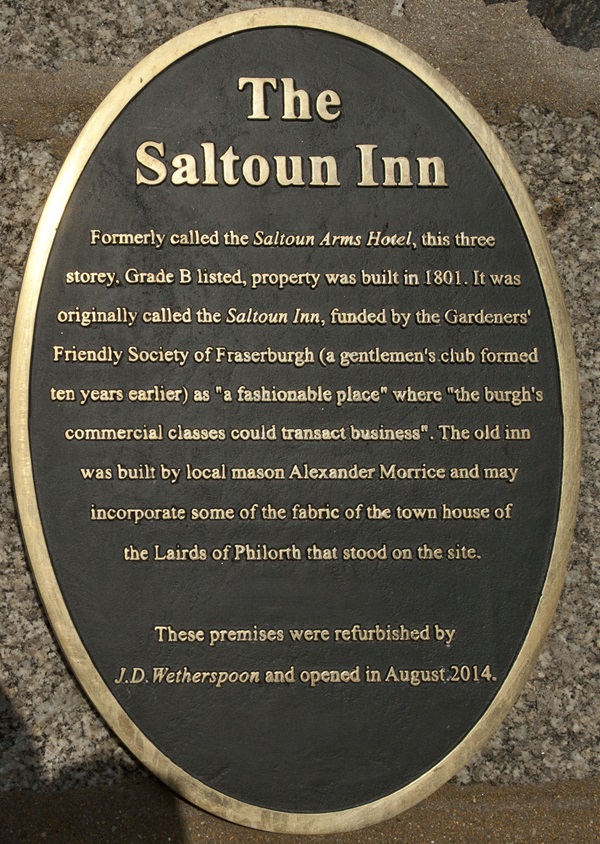
The plaque reads: Formerly called The Saltoun Arms Hotel, this three story, grade B listed property, was built in 1801. It was originally called The Saltoun Inn, funded by the Gardeners’ Friendly Society of Fraserburgh (a gentlemen’s club formed ten years earlier) as ‘a fashionable place’ where ‘the burgh’s commercial classes could transact business’. The old inn was built by local mason Alexander Morrice and may incorporate some of the fabric of the town house of the Lairds of Philorth that stood on the site.
These premises were refurbished by J D Wetherspoon and opened in August 2014.
A photograph and text about The Saltoun.
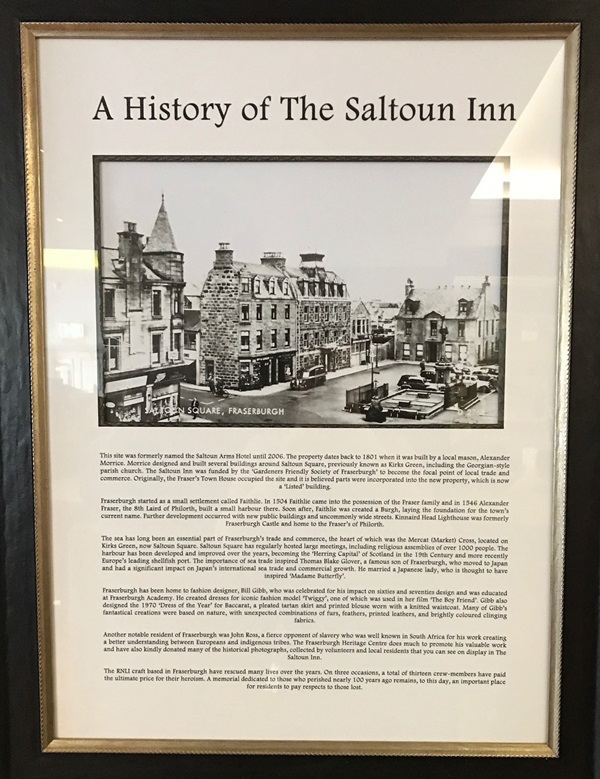
The text reads: This site was formerly named The Saltoun Arms Hotel, until 2006. The property dates back to 1801 when it was built by a local mason, Alexander Morrice. Morrice designed and built several buildings around Saltoun Square, previously known as Kirks Green, including the Georgian style parish church. The Saltoun Inn was funded by the Gardeners Friendly Society of Fraserburgh to become the focal point of local trade and commerce. Originally, the Fraser’s Town House occupied the site and it is believed parts were incorporated into the new property, which is now a listed building.
Fraserburgh started as a small settlement called Faithlie. In 1504 Faithlie came into the possession of the Fraser family and in 1546 Alexander Fraser, the 8th Laird of Philorth, built a small harbour there. Soon after, Faithlie was created a Burgh, laying the foundation for the town’s current name. Further development occurred with new public buildings and uncommonly wide streets. Kinnaird Head Lighthouse was formerly Fraserburgh Castle and home to the Fraser’s of Philorth.
The sea has long been an essential part of Fraserburgh’s trade and commerce, the heart of which was the Mercat (Market) Cross, located on Kirks Green, now Saltoun Square. Saltoun Square has regularly hosted large meetings, including religious assemblies of over 1,000 people. The harbour has been developed and improved over years, becoming the Herring Capital of Scotland in the 19th century and more recently Europe’s leading shellfish port. The importance of sea trade inspired Thomas Blake Glover, a famous son of Fraserburgh, who moved to Japan and had a significant impact on Japan’s international sea trade and commercial growth. He married a Japanese lady, who is thought to have inspired Madame Butterfly.
Fraserburgh has been home to fashion design, Bill Gibb, who was celebrated for his impact on sixties and seventies design and was educated at Fraserburgh Academy. He created dresses for iconic fashion model Twiggy, one of which was used in her film The Boy Friend. Gibb also designed the 1970 Dress of the Year for Baccarat, a pleated tartan skirt and printed blouse worn with a knitted waistcoat. Many of Gibb’s fantastical creations were based on nature, with unexpected combinations of furs, feathers, printed leathers, and brightly coloured clinging fabrics.
Another notable resident of Fraserburgh was John Ross, a fierce opponent of slavery who was well known in South Africa for his work creating a better understanding between Europeans and indigenous tribes. The Fraserburgh Heritage Centre does much to promote his valuable work and have also kindly donated many of the historical photographs, collected by volunteers and local residents that you can see on display in The Saltoun Inn.
The RNLI craft based in Fraserburgh have rescued many lives over the years. On three occasions, a total of thirteen crew members have paid the ultimate price for their heroism. A memorial dedicated to those who perished nearly 100 years ago remains, to this day, an important place for residents to pay respects for those lost.
Illustrations and text about Charles Rawden Maclean.
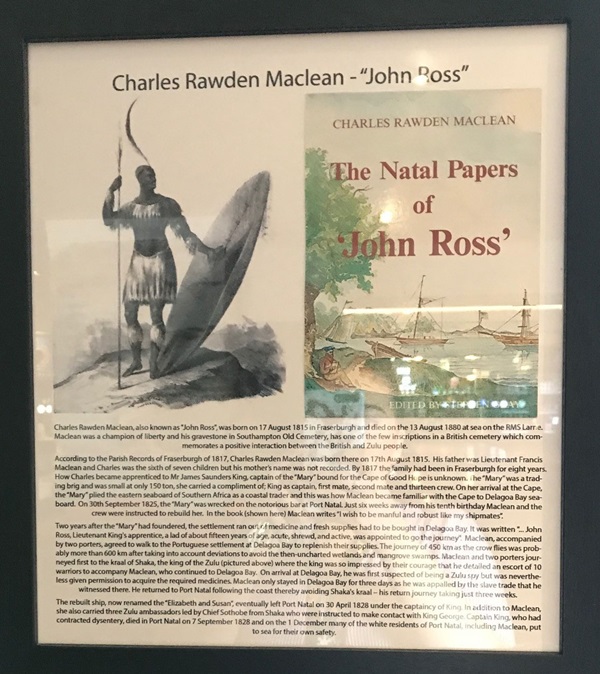
The text reads: Charles Rawden Maclean, also known as ‘John Ross’, was born on 17 August 1815 in Fraserburgh and died on 31 August 1880 at sea on the RMS Larne. Maclean was a champion of liberty and his gravestone in Southampton Old Cemetery, has one of the few inscriptions in a British cemetery which commemorates a positive interaction between the British and Zulu people.
According to the Parish Records of Fraserburgh of 1817, Charles Rawden Maclean was born there on 17 August 1815. His father was Lieutenant Francis Maclean and Charles was the sixth of seven children but his mother’s name was not recorded. By 1817 the family had been in Fraserburgh for eight years. How Charles became apprenticed to Mr James Saunders King, captain of the Mary bound for the Cape of Good Hope, is unknown. The Mary was a traditional brig and was small at only 150 ton, she carried a compliment of; King as captain, first mate, second mate and thirteen crew. On her arrival at the Cape, the Mary plied the eastern seaboard of Southern Africa as a coastal trader and this was how Maclean became familiar with the Cape to Delagoa Bay seaboard. On 10 September 1825, the Mary was wrecked on the notorious bar at Port Natal. Just six weeks away from his tenth birthday Maclean and the crew were instructed to rebuild. In the book (shown here) Maclean writes “I wish to be manful and robust like my shipmates”.
Two years after the Mary had foundered, the settlement ran out of medicine, and fresh supplies had to be bought in Delagoa Bay. It was written “…John Ross, Lieutenant King’s apprentice, a lad of about fifteen years of age, acute, shrewd, and active, was appointed to go the journey”. Maclean, accompanied by two porters, agreed to walk the Portuguese settlement at Delagoa Bay to replenish their supplies. The journey of 450km as the crow flies was probably more than 600km after taking into account deviations to avoid the then-unchartered wetlands and mangrove swamps. Maclean and two porters journeyed first to the kraal of Shaka, the king of the Zulu (pictured above) where the king was so impressed by their courage that he detailed an escort of 10 warriors to accompany Maclean, who continued on the Delagoa Bay. On arrival at Delagoa Bay, he was first suspected of being a Zulu spy but was nevertheless given permission to acquire the required medicines. Maclean only stayed in Delagoa Bay for three days as he was appalled by the slave trade that he witnessed there. He returned to Port Natal following the coast thereby avoiding Shaka’s kraal – his return journey taking just three weeks.
The rebuilt ship, now renamed the Elizabeth and Susan, eventually left Port Natal on 30 April 1828 under the captaincy of King. In addition to Maclean, she also carried three Zulu ambassadors led by Chief Sothobe from Shaka who were instructed to make contact with King George. Captain King, who had contracted dysentery, died in Port Natal on 7 September 1828 and on the 1 December many of the white residents of Port Natal, including Maclean, put to sea for their own safety.
A photograph and text about Fraserburgh Harbour.
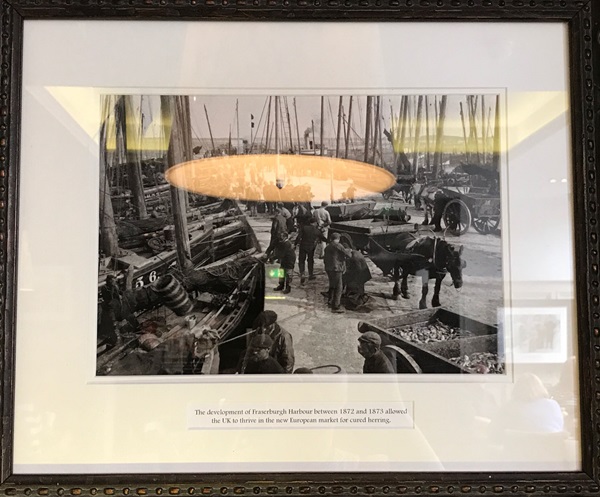
The text reads: The development of Fraserburgh Harbour between 1872 and 1873 allowed the UK to thrive in the new European market for cured herring.
A photograph and text about herring fishing along the East Coast.
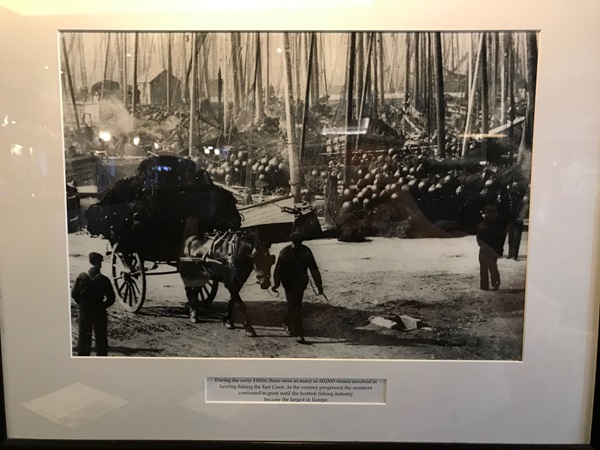
The text reads: During the early 1900s, there were as many as 30,000 vessels involved in herring fishing along the East Coast. As the century progressed, the numbers continued to grow until the Scottish fishing industry became the largest in Europe.
Pewter and copper metalwork entitled Mackerel Shoal, by Sam Macdonald.
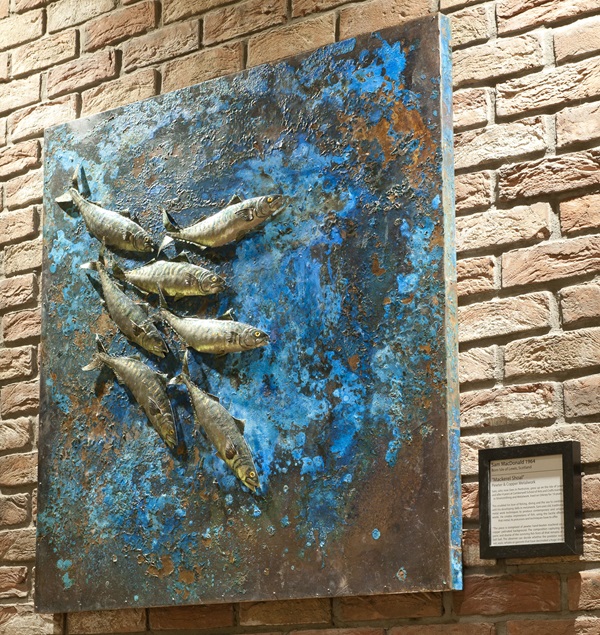
External photograph of the building – main entrance.
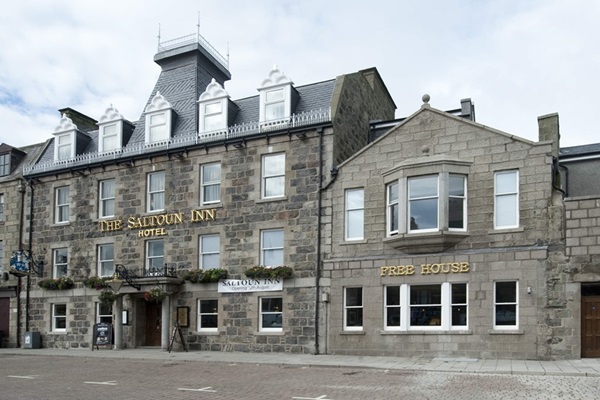
If you have information on the history of this pub, then we’d like you to share it with us. Please e-mail all information to: pubhistories@jdwetherspoon.co.uk